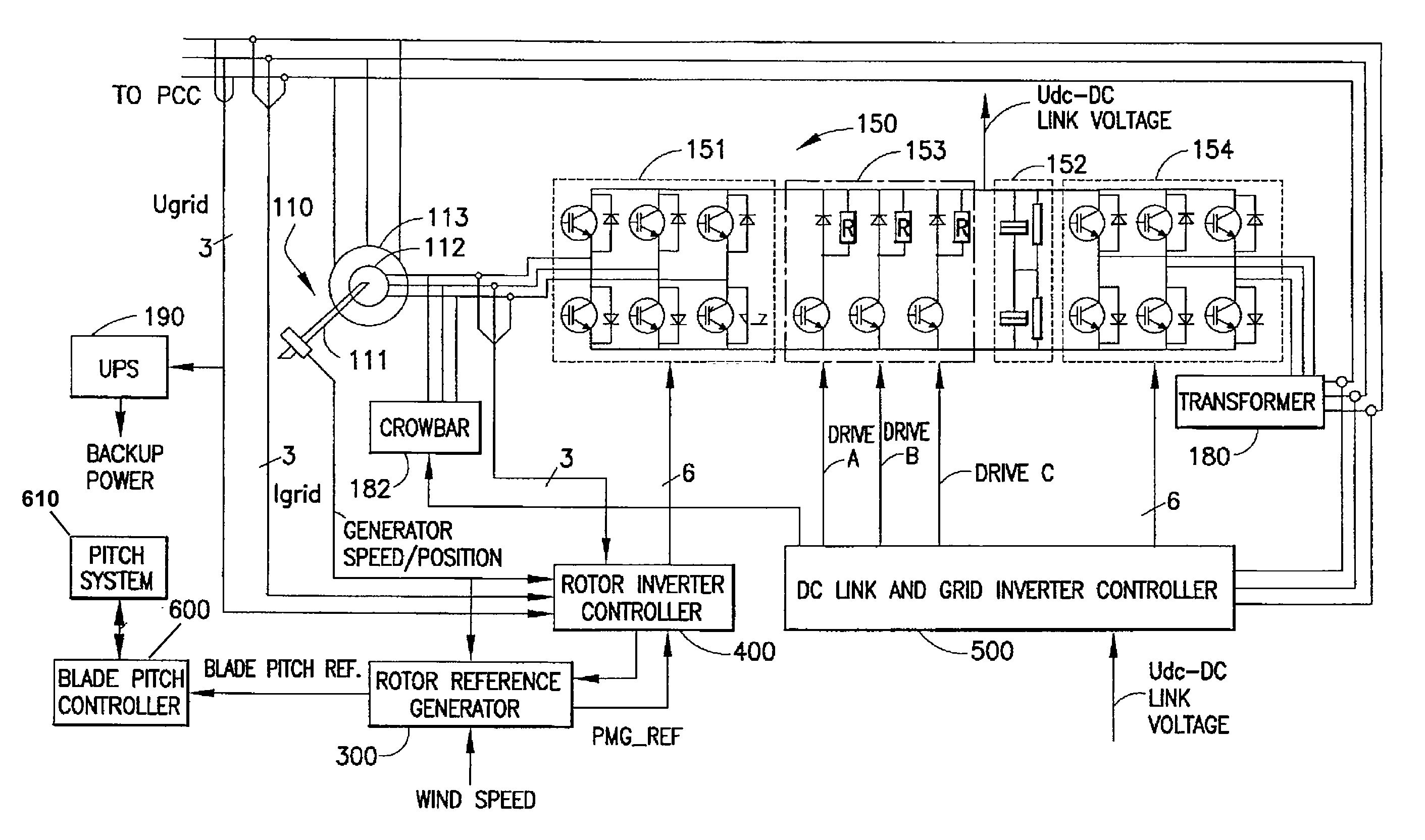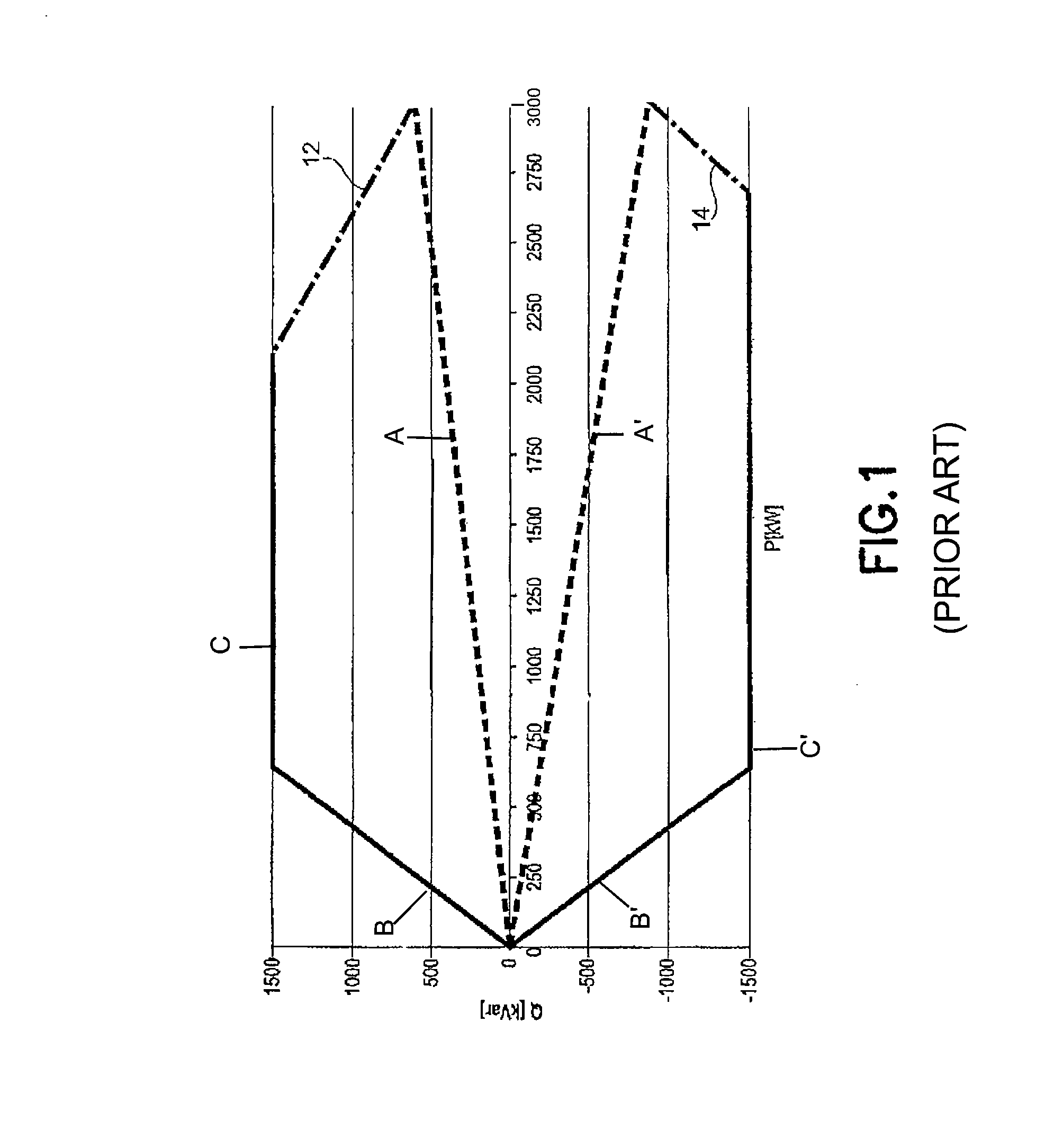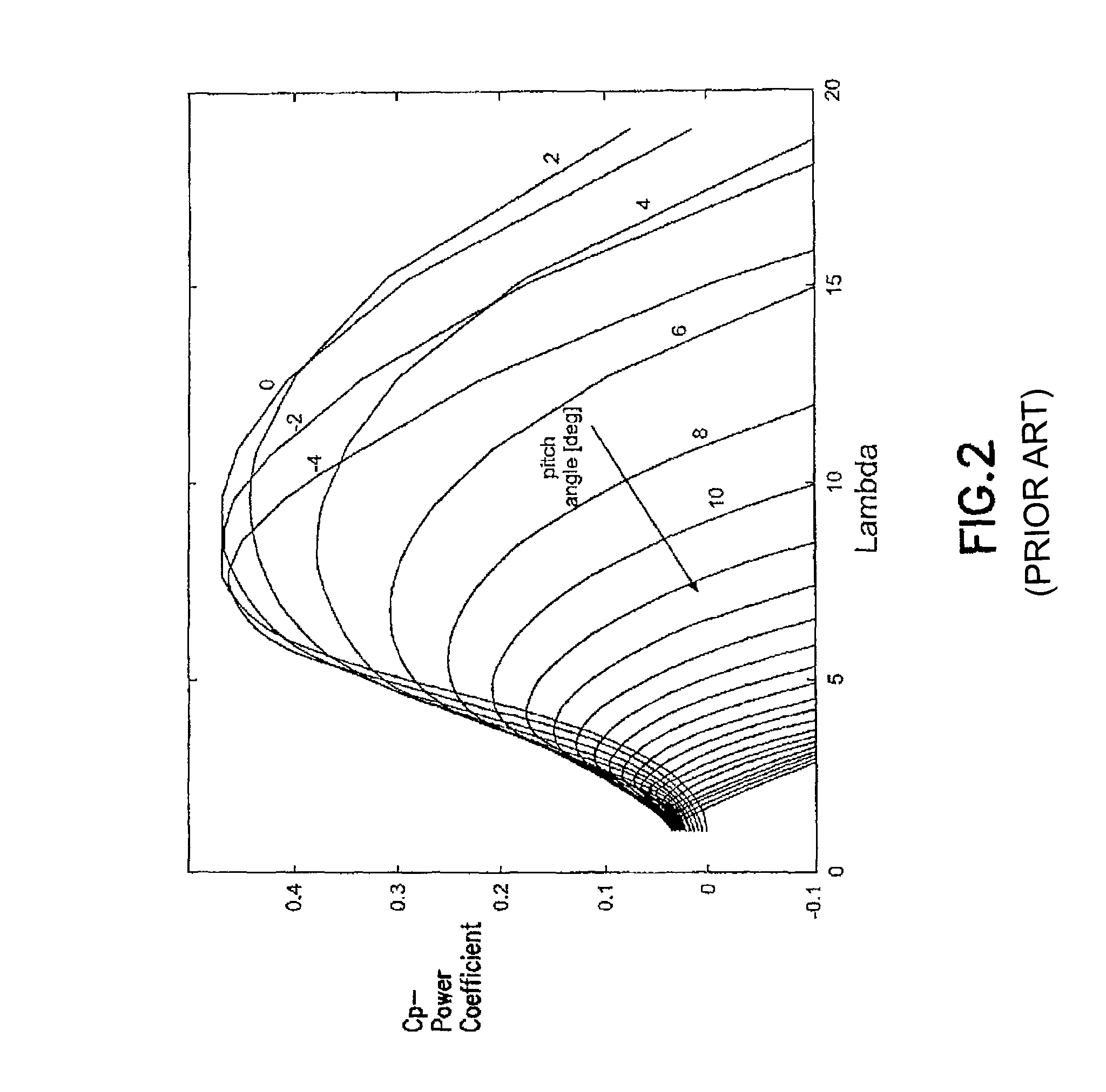Variable speed wind turbine with a doubly-fed induction generator and rotor and grid inverters that use scalar controls
a variable speed, generator technology, applied in the direction of engine control, motors, optimising machine performance, etc., can solve the problems of increasing rotor heating, overexcitation of generators, and underexcitation of generators, so as to improve the effect of low voltage faults and precise control of individual stators
- Summary
- Abstract
- Description
- Claims
- Application Information
AI Technical Summary
Benefits of technology
Problems solved by technology
Method used
Image
Examples
Embodiment Construction
[0049]Reference will now be made in detail to embodiments of the invention, examples of which are illustrated in the accompanying drawings. Wherever possible, the same reference numbers will be used throughout the drawings to refer to the same or like parts.
[0050]FIG. 1 describes power output limits of a known DFIG, with line 12 showing the output limits due to rotor heating and line 14 showing output limits due to stator end heating. That is, in order to produce more reactive power (Q) when the reactive power corresponds to a power factor of 0.98 (labeled as Line A) due to thermal limits of the generator rotor circuit (shown by Lines B and C) and when the DFIG is operating at full power (i.e., 3000 kW) the active power (P) must be limited as shown by line 12. Similarly, to absorb more reactive power when the thermal limit of the stator (shown by Lines B′ and C′) is defined by a power factor of 0.96 (labeled as Line A′), the active power must be reduced as shown by line 14.
[0051]FIG...
PUM
 Login to View More
Login to View More Abstract
Description
Claims
Application Information
 Login to View More
Login to View More - R&D
- Intellectual Property
- Life Sciences
- Materials
- Tech Scout
- Unparalleled Data Quality
- Higher Quality Content
- 60% Fewer Hallucinations
Browse by: Latest US Patents, China's latest patents, Technical Efficacy Thesaurus, Application Domain, Technology Topic, Popular Technical Reports.
© 2025 PatSnap. All rights reserved.Legal|Privacy policy|Modern Slavery Act Transparency Statement|Sitemap|About US| Contact US: help@patsnap.com



